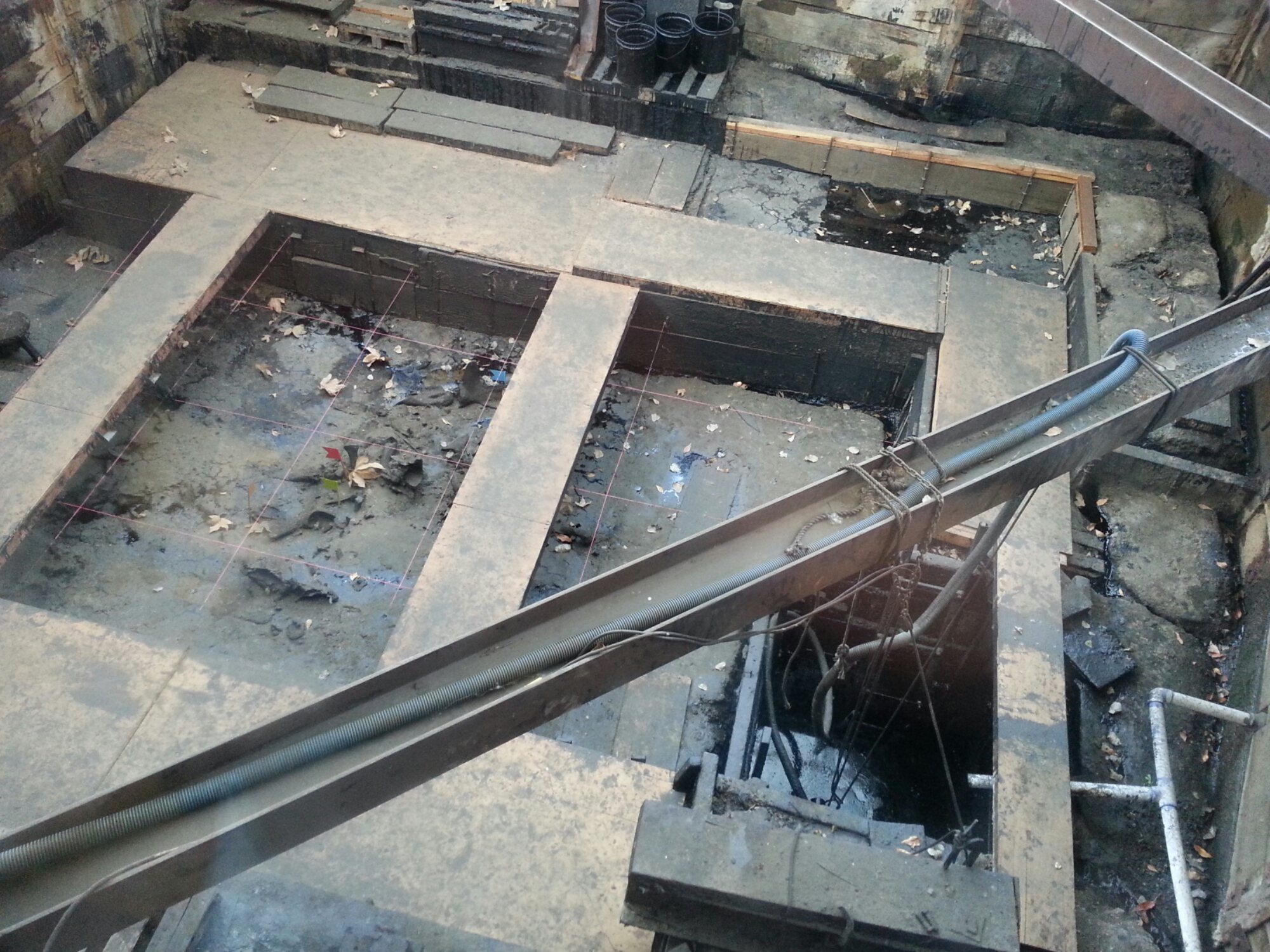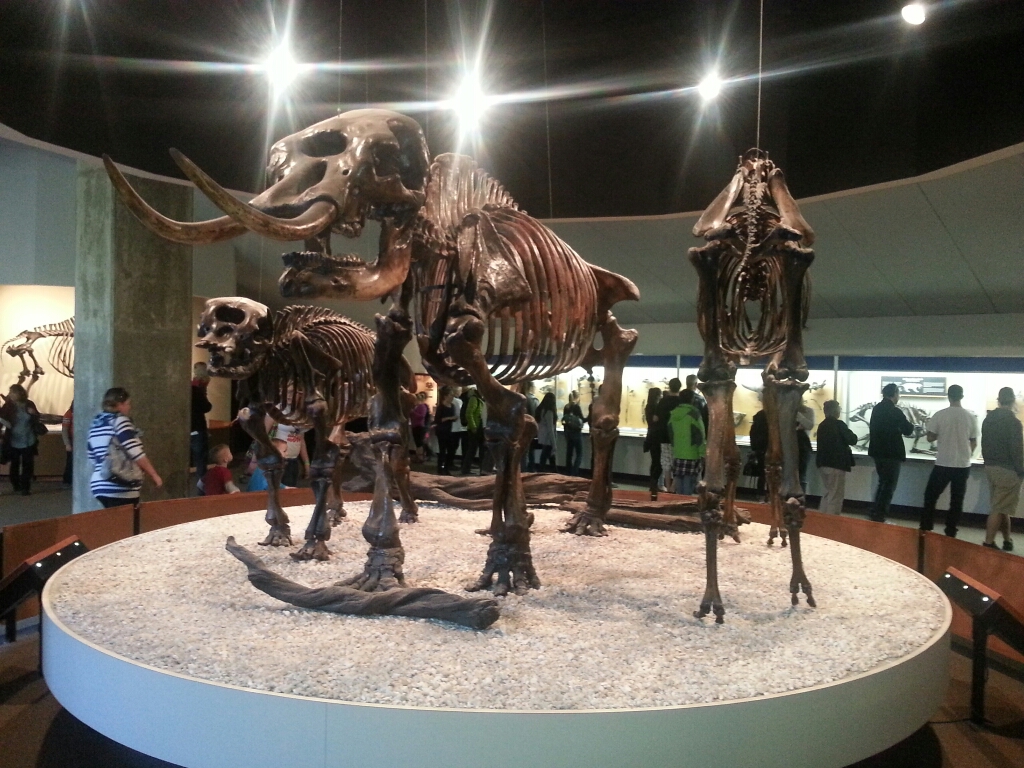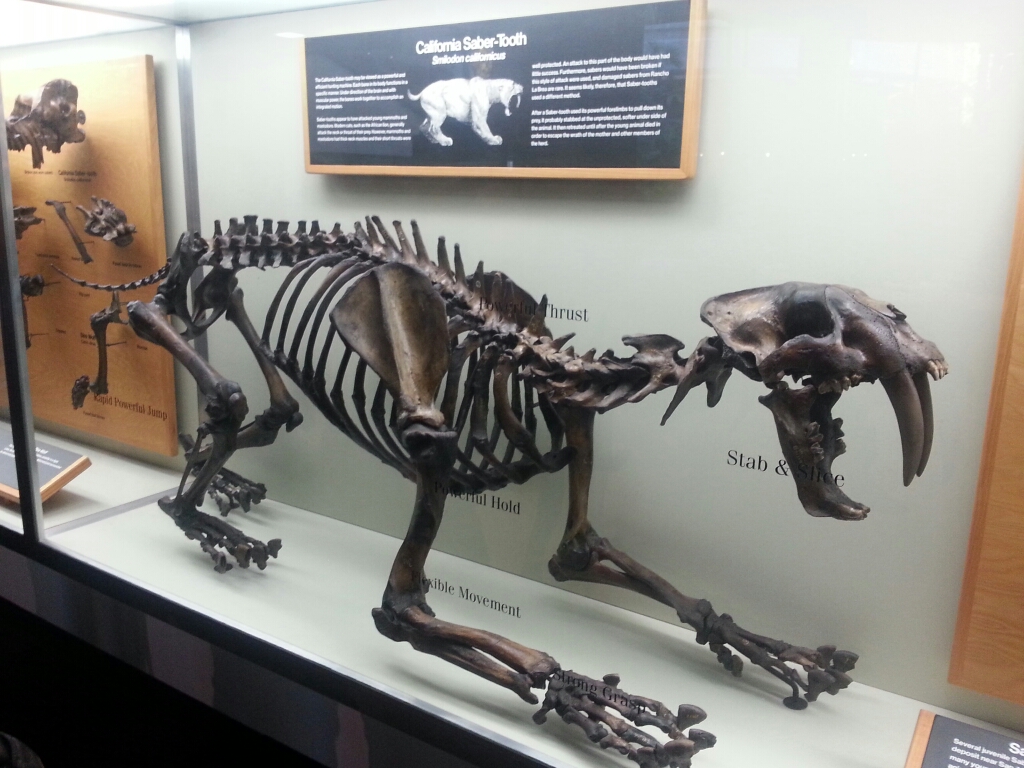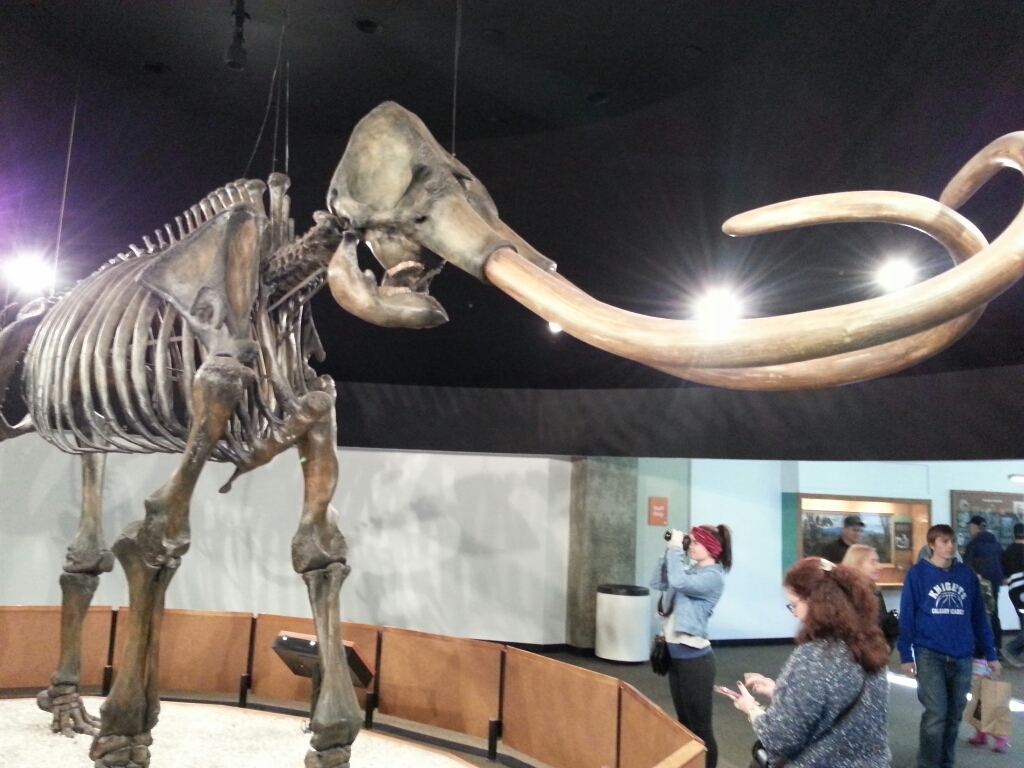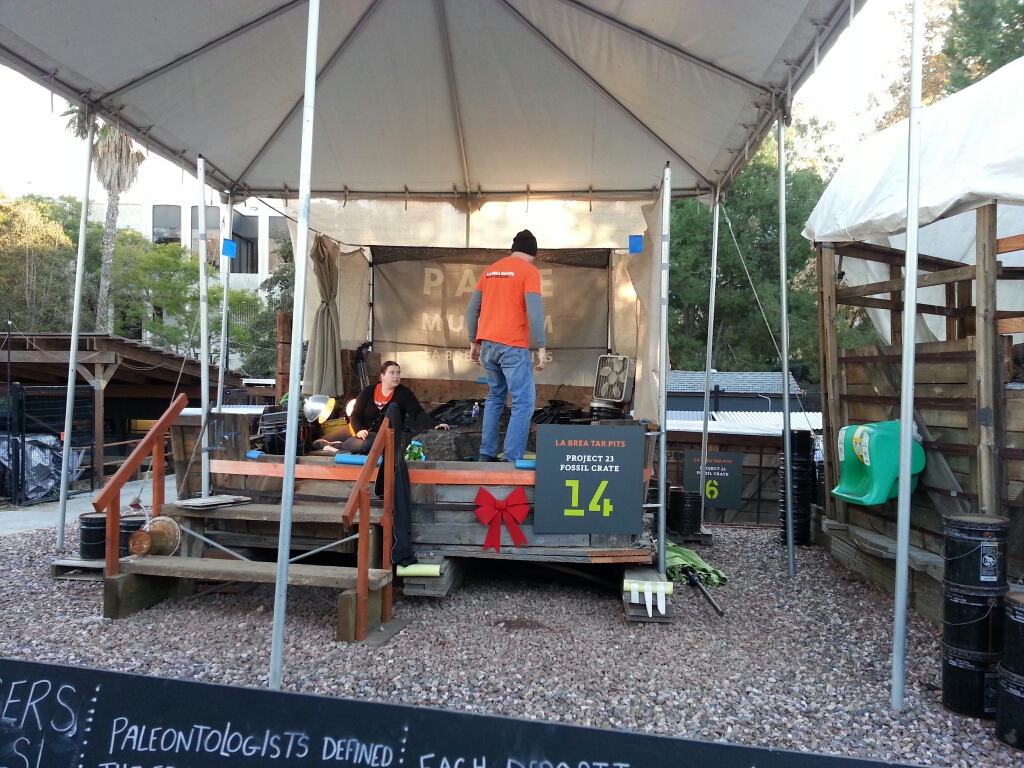This was a place that Ellie and I have been wanting to visit for a very long time. It’s a site where naturally occurring asphalt (still today) pushes up through the ground to form small pools of very sticky ooze. They believe it was only ever 2-3 inches deep but so sticky even huge animals couldn’t escape.
This is the main complex. The sloped ground around the outside houses the archives:

This is what most people think of when they think of the tar pits, but this isn’t how it actually happened:
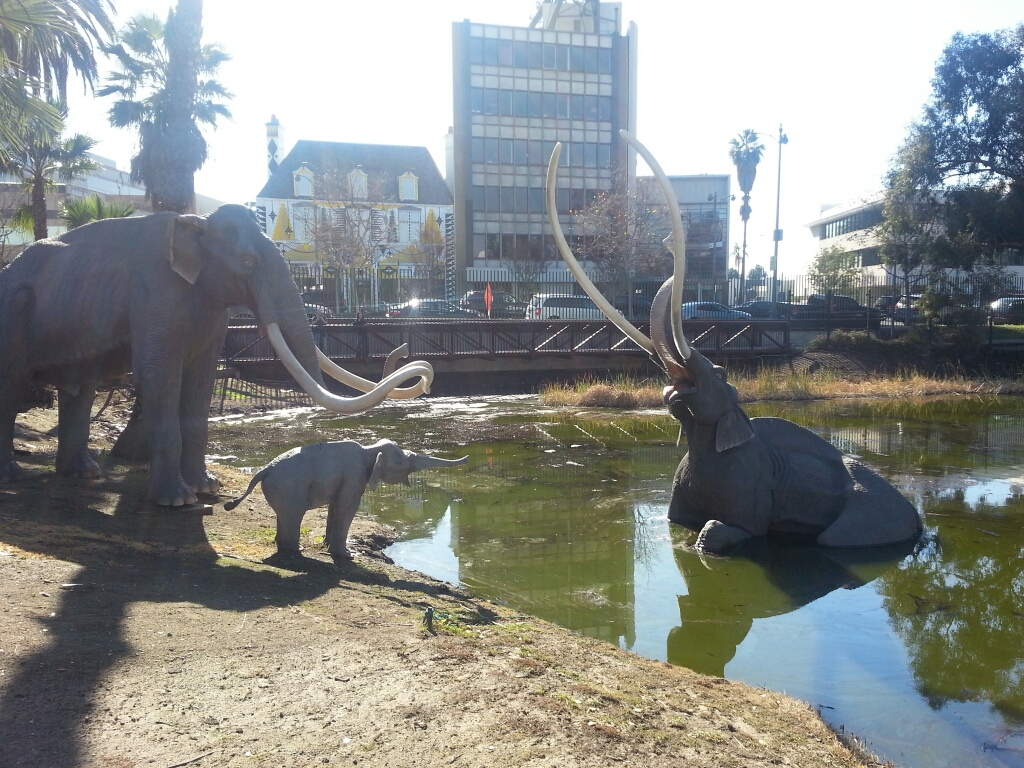
Over the millenia it has trapped many an ice-age animal whose fossilised remains are still being excavated today (over 3.5 million fossils have been catalogued from the 23 acres so far).
Some of these date back to over 60,000 years and include specimens such as the mammoth and sabre-tooth tiger (actually just cat).
The asphalt almost perfectly preserves the bones.
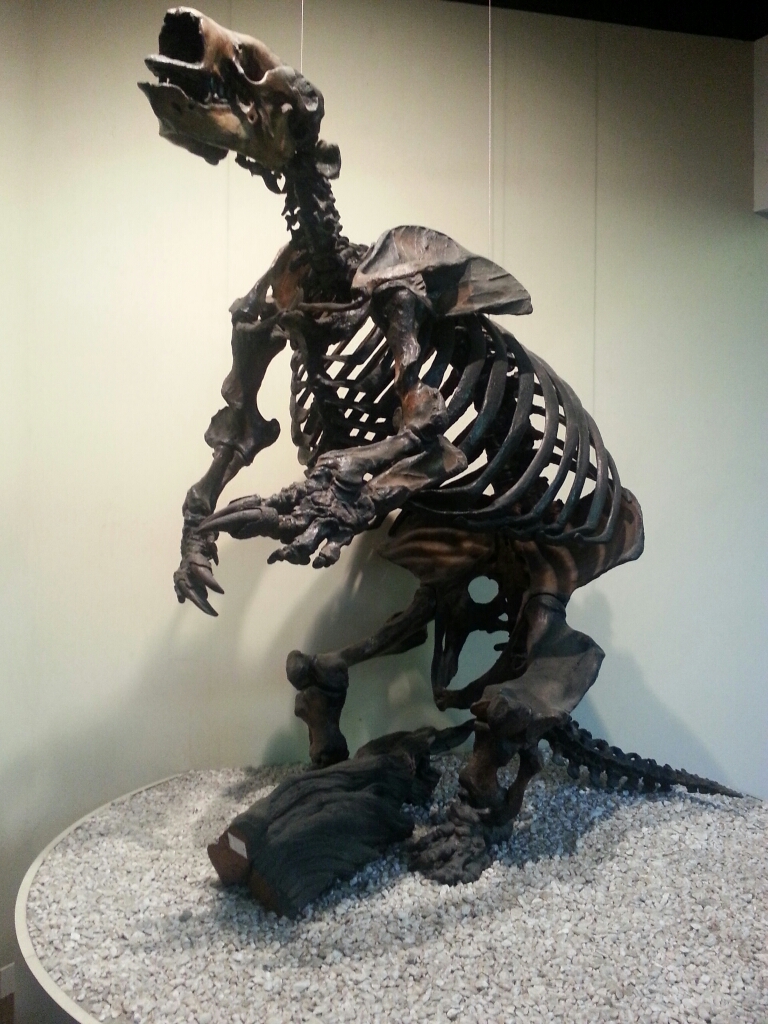
What’s so interesting is that a single pool will end up containing the fossilised remains of many animals: one animal gets stuck, then struggles which attracts predators, who get stuck too.
The “observation pit” has been used for learning over the last 50 years – it was discovered, excavated, cataloged, & then reconstructed as it was originally found. In this one mound (~3m long) there are the remains of 7 animals:
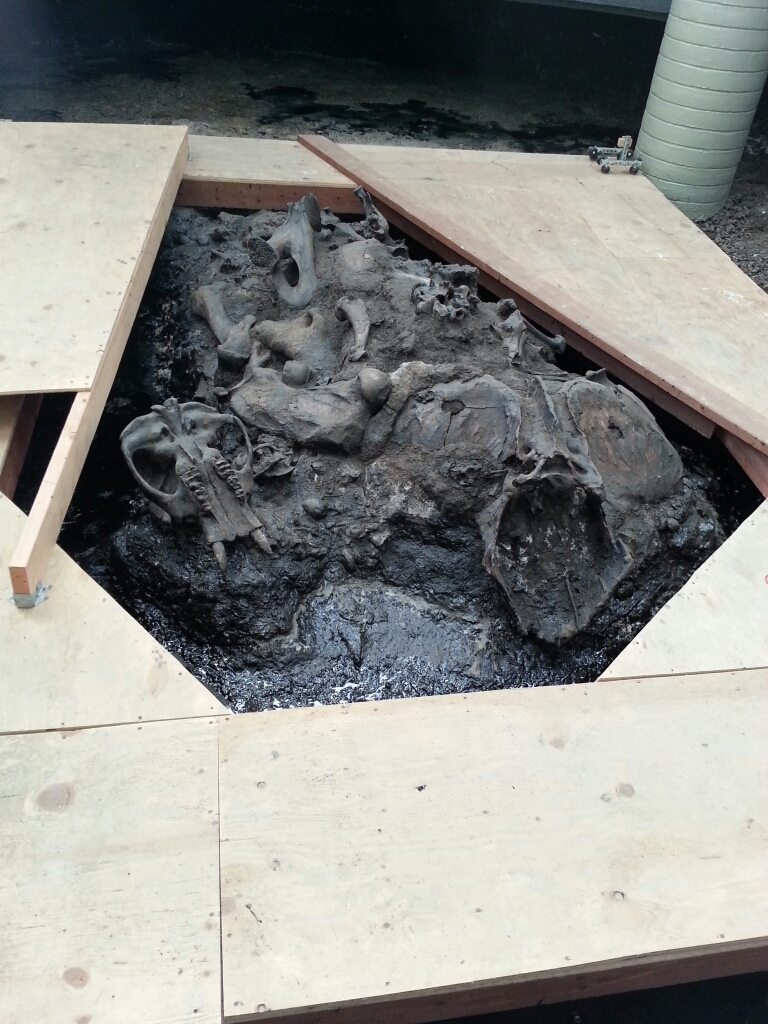
A few years back the art gallery next door was building an underground car park and inevitably they discovered more. Rather than hold up their development for probably decades they dug up all of the finds in large blocks and crated them up for examination later. This is now called “Project 23” (referring to the number of crates formed, some weighing several tons). This will keep them busy for a very long time.
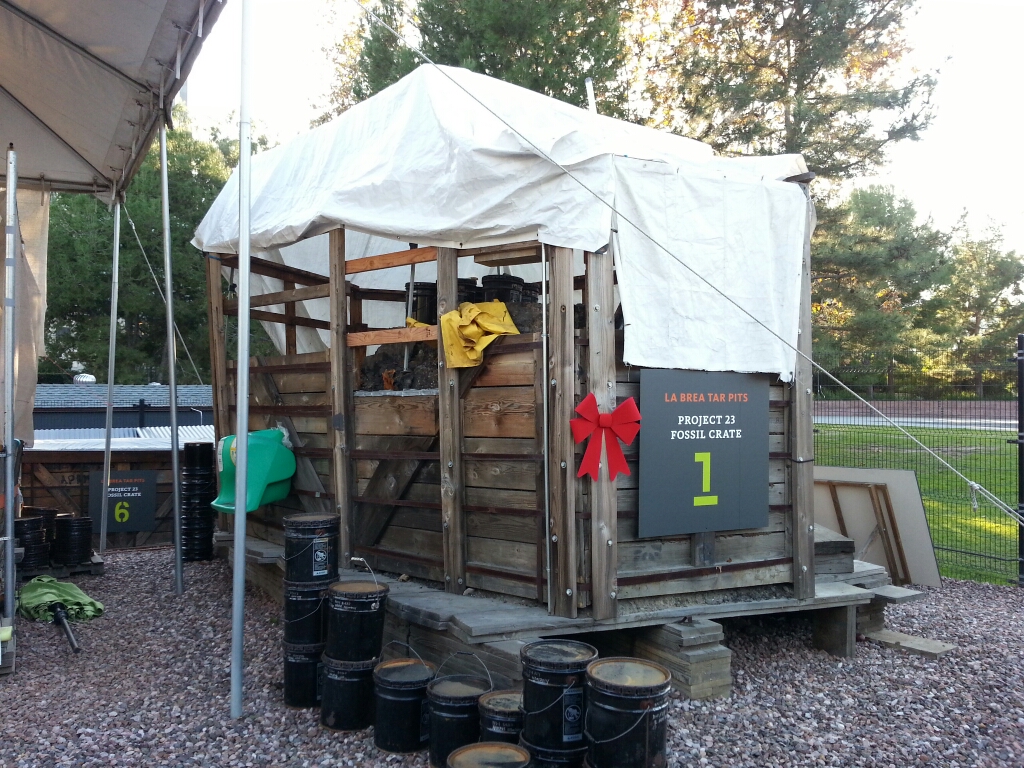
This is “Pit 91” – one of the original excavation sites from the early 1900s:
